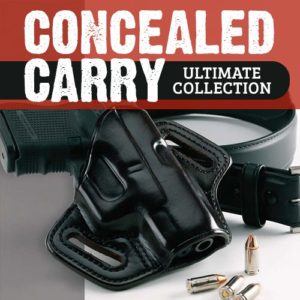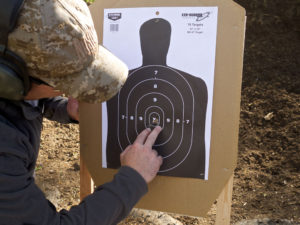
Arm Yourself With Knowledge
Become an expert in all aspects of concealed carry with the Ultimate Concealed Carry Collection. Understand equipment choices, from holsters to handguns, and receive expert comparison on today's CCW handguns and gear. The collection also covers the legal aspects you must understand before you draw your firearm in self-defense. Learn More

Effective handgun shooting drills are task-oriented; they’re designed to provide practice opportunities for the tasks most likely required in an actual defensive shooting. What, then, are the things we need to practice?
This is a common question in the defensive shooting world. Many people have tried to answer it but, unfortunately, a dispassionate, fact-based answer is difficult to come by. This is because most people answer the question not from the kind of research done by leaders in the field like Claude Werner and Tom Givens, but from biases based on their own shooting activities or careers.
Some people come with an equipment bias: they do certain things because they like the equipment, then search for ways in which to use that equipment and do drills which validate their equipment selections. Certain types of gear will dictate that you do things a certain way, or that you use them instead of something more suitable. An equipment bias limits what you’ll do (or can do or can train) to things that fit what you have, rather than making what you have fit the task at hand.

Take, for instance, a flashlight mounted on a handgun. There are certainly uses for such devices, but they’re pretty specific and are never a substitute for other forms of illumination. Too many folks, however, will practice their “low light” drills with these exclusively, to the detriment of actually being able to use better-suited and more common illumination tools — things like handheld flashlights (or even room light switches!). This particular gear bias results in low-light drills being designed that don’t accurately reflect the conditions under which supplementary lighting might really be needed.
The “bump in the night” that results in your muzzle sweeping your teenage child coming home past his bedtime might be the unfortunate result of such an equipment bias.
Equipment isn’t the only bias people have, of course. Some come to the discussion with a source bias: because a drill or technique comes from an authoritative or charismatic figure, people often feel compelled to practice and promote it even though it may not fit the context under which it will be used. The implicit correctness which we perceive because of the source’s pedigree is a form of the logical fallacy “appeal to authority,” where the merits of the proposal aren’t discussed because of the unimpeachable nature of the source. Many of the military-inspired training routines that have nothing to do with private sector defensive shooting come from source bias.
There is also a scoring bias: we practice to improve ourselves by some objective measure, even if that measure has no real bearing on our ability to defend ourselves. This is heavily prevalent in the shooting world, owing to the number of competition shooters who have moved into the training realm over the years. (This is not to discount the value of competition as a test bed for new techniques and equipment, you understand, only to put their interest in objective scoring into perspective.)
In Part II, the author outlines the specific things needed during practice for a successful execution of a defensive gun use.
This Article is an Excerpt From:
 Handgun Training – Practice Drills for Defensive Shooting
Handgun Training – Practice Drills for Defensive Shooting
Make your handgun skills combat-ready with the drills outlined in this handy little book. Nothing will give you more peace and security in your own home and on the street than the confidence you'll gain knowing you will hit your target. Get your copy
